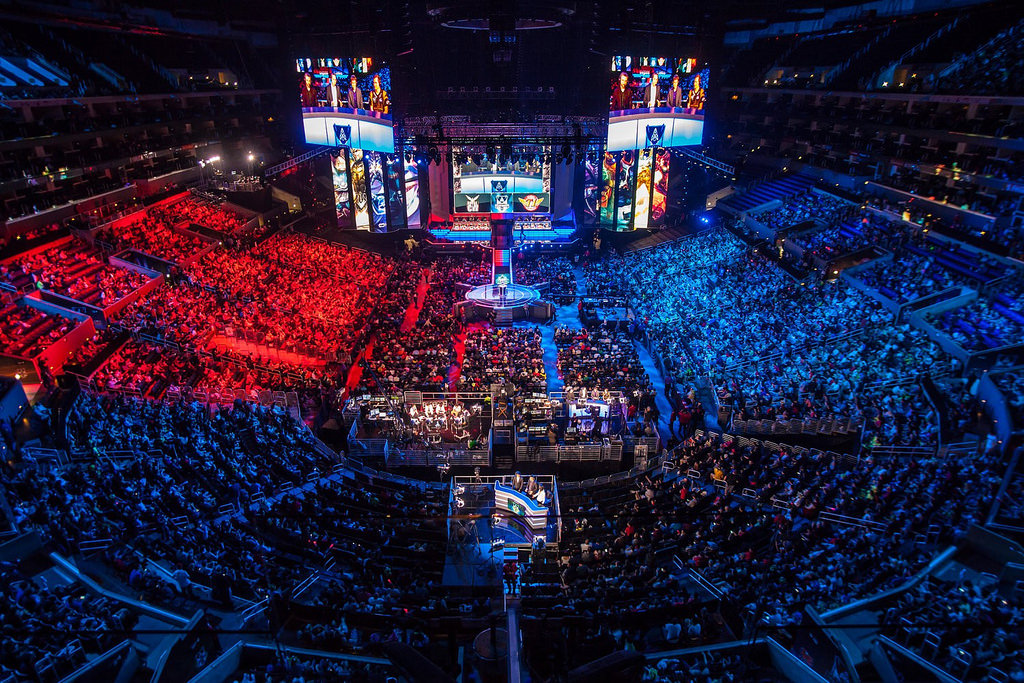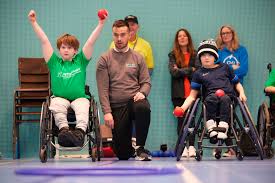Sports: More Than Just Physical Activity

In today’s fast-paced world, sports hold an increasingly vital place in people’s lives, offering physical, mental, and social benefits that go far beyond the act of exercise itself. Engaging in sports helps maintain a healthy body and significantly boosts mental resilience and improves quality of life. Beyond traditional sports, recent years have seen a surge in interest for activities ranging from endurance sports to digital sports (esports), as well as technology that enhances training and performance. With the evolution of sports trends and innovations, the world of sports offers something for everyone, regardless of age, fitness level, or experience.
1. The Physical and Mental Benefits of Sports
Regular participation in sports provides benefits that go well beyond physical health. For many, it’s an essential way to stay fit, reduce disease risk, and build a strong, agile body. For others, it is a mental escape, reducing stress, boosting mood, and offering a sense of achievement and personal growth.
a. Physical Benefits
Physically, sports help improve cardiovascular health, strengthen muscles, and enhance joint flexibility. Regular activity reduces the risk of serious health conditions, such as obesity, diabetes, and heart disease. Furthermore, sports that require quick movements, like basketball, soccer, and tennis, help enhance motor skills, balance, and coordination.
b. Mental Health Benefits
Sports can also serve as a powerful tool for improving mental health. Physical activity releases endorphins, hormones that help boost mood and reduce stress. Participating in team sports fosters a sense of community and camaraderie, providing social support that can help alleviate feelings of isolation. Sports also help develop focus, discipline, and resilience—skills that are beneficial in all areas of life.
2. Popular Sports and Their Impact
Some of the world’s most popular sports—running, soccer, and basketball—not only offer varied physical benefits but also promote a wide range of social and community-building experiences.
a. Running
Running is one of the most accessible and flexible sports, enjoyed by millions of people around the world. Runners experience enhanced cardiovascular fitness, stronger bones, and lower levels of stress. Marathons and fun runs have become popular social events, allowing participants to connect with others, set personal goals, and even contribute to charity causes. Running can be done individually or in groups, making it suitable for any schedule or fitness level.
b. Soccer
As the world’s most popular sport, soccer requires agility, stamina, and teamwork. For players, it’s an effective cardiovascular workout that also improves coordination, reflexes, and muscle endurance. Beyond physical benefits, soccer fosters a sense of teamwork and camaraderie. At community and professional levels alike, it brings people together, helping to bridge cultural and social gaps.
c. Basketball
Basketball is another globally popular sport, known for its high intensity and strategic elements. Players benefit from enhanced agility, strength, and coordination. Beyond these physical gains, basketball offers valuable lessons in teamwork, strategy, and communication. Many communities promote basketball for youth, providing both a physical outlet and a positive environment for building social skills.
3. Leveraging Technology in Sports
In recent years, technology has transformed the way people engage with sports, from training routines to performance tracking. Devices and apps designed to track health metrics help athletes of all levels make informed choices to maximize their performance and avoid injury.
a. Wearable Technology and Performance Tracking
Wearable devices such as fitness trackers and smartwatches have revolutionized sports. These devices monitor essential metrics like heart rate, steps, sleep patterns, and calories burned, providing valuable data to optimize training routines. Advanced wearables even measure metrics like oxygen levels and VO2 max, helping athletes make informed decisions about their health and performance.
b. Apps and Virtual Training
Apps like Strava, MyFitnessPal, and Nike Training Club offer structured training programs, virtual coaching, and social communities, making sports more accessible to beginners and seasoned athletes alike. These apps enable athletes to set goals, track progress, and engage in friendly competition with others, motivating users to stay consistent and improve over time.
c. Sports Analytics and Performance Enhancement
In professional sports, data analytics is used to analyze players’ strengths and weaknesses, devise strategies, and optimize team performance. Technologies like motion capture and artificial intelligence provide insights into movement patterns and techniques, helping athletes enhance their skills and reduce the risk of injuries.
4. The Rise of Esports: A New Era in Sports
Esports, or electronic sports, represents the competitive world of video gaming, attracting millions of viewers and participants globally. Initially seen as entertainment, esports has grown into a recognized discipline with tournaments, professional leagues, and dedicated training facilities. Esports offers a unique type of sports engagement, attracting both players and audiences who enjoy digital games with strategic and tactical elements.
a. Benefits of Esports
Though esports doesn’t involve traditional physical exertion, it does require mental agility, concentration, and strategic thinking. Esports players often engage in rigorous training schedules to sharpen their skills and build quick reflexes. The mental benefits of esports include improved cognitive abilities, enhanced reaction time, and the ability to make decisions under pressure.
b. Community and Inclusivity
One significant appeal of esports is its inclusivity; it is accessible to people of all ages, abilities, and physical limitations. Many esports tournaments bring together diverse communities, allowing people to connect and collaborate virtually. As esports continues to grow, it provides unique opportunities for people to socialize and compete on a global scale.
c. Esports and Traditional Sports: A Synergistic Relationship
Many professional athletes and sports organizations have embraced esports, recognizing its role in engaging younger audiences and promoting strategic thinking. Some traditional sports teams even have their own esports divisions, bridging the gap between physical sports and gaming. This synergy has helped reshape the sports landscape, creating new ways to inspire and engage fans.
5. How to Get Started in Sports: Tips for Beginners
For those new to sports, starting a routine can seem intimidating. However, there are several ways to ease into a sports activity and make it an enjoyable part of daily life.
- Set Realistic Goals: Begin by setting small, achievable goals. Whether aiming to jog for 10 minutes a day or learn basic basketball skills, gradual progress is more sustainable.
- Find a Community: Joining a group or club can provide motivation, accountability, and social support.
- Choose the Right Gear: Proper equipment and attire are essential for safety and comfort.
- Utilize Technology: Use apps or wearables to track your progress and set reminders for your workouts.
- Focus on Enjoyment: Choose a sport you genuinely enjoy. The more you look forward to your sessions, the easier it is to maintain a routine.
6. Conclusion: The Expanding World of Sports
Sports today encompass a wide variety of activities, from traditional athletics to innovative digital competitions. With the growth of technology and the introduction of esports, sports are evolving and becoming more inclusive, providing benefits for all. Physical activity remains crucial to health, while sports also promote mental well-being, resilience, and social connections.
Whether participating in running, soccer, esports, or another sport, the goal is to embrace physical and mental benefits while building a lifelong, enjoyable practice. In the end, sports are more than just physical movement—they are a journey toward personal growth, community, and a healthier, happier life.





